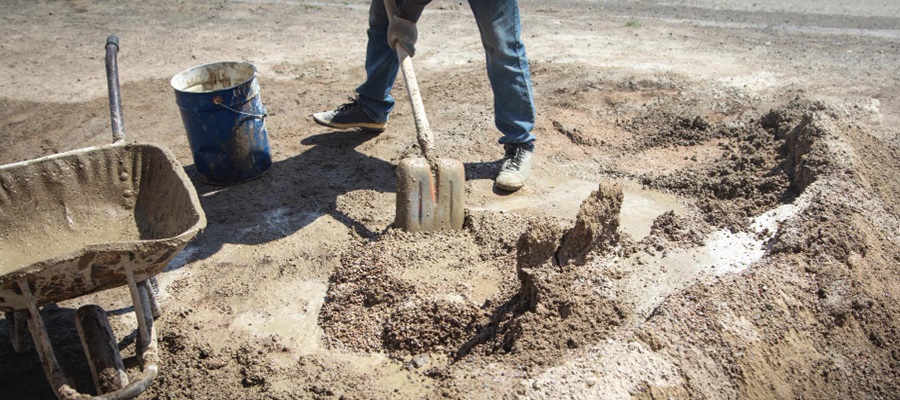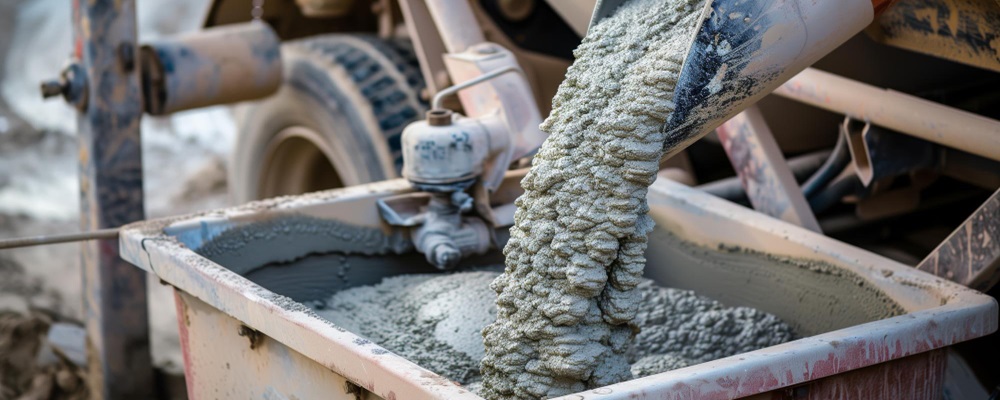Concrete is a widely used construction material. It is a mixture of cement, sand, aggregates, water, and admixtures. Concrete’s strength directly impacts the durability of your construction. Hence, it is crucial to consider the strength of concrete before you use it in your construction. The grade of concrete is a way to figure out how strong the concrete is after 28 days of being worked on, such as M5, M10, M20, M25, M30, M40 and more. The grade of concrete is shown by the magnitude, which is written as N/mm2 or MPa. The grade of concrete is divided into three categories: ordinary grade, standard grade and high-strength grade.
Brick & Bolt presents a comprehensive guide to the M20 grade of concrete, covering everything from the basic M20 concrete ratio to its applications and calculations of the components.
What is the M20 Concrete Ratio?
M 20 concrete ratio gains a compressive strength of 20 N/mm2 or MPa after 28 days of curing period. Simply put, the M20 concrete ratio is the percentage that the concrete is mixed with to get the required 20 N/mm2 or MPa compressive strength. It shows the highest stress that the concrete can withstand before cracking or shearing. It is an ordinary concrete grade that is used in building projects that need average compressive strength. M20 concrete grade is used to build residential and low-rise buildings, as well as supports, floors, and other structural parts.
As per IS 456:2000, the M20 grade concrete ratio is 1:1.5:3, which means 1 part of cement, 1.5 parts of fine aggregates or sand, and 3 parts of coarse aggregates.
Application of the M20 Concrete Mix Ratio
M20 concrete ratio is often used in reinforced cement concrete (RCC) constructions, including stairwells, beams, columns, and slabs. The applications are as follows:
Pavements: M2O concrete grade is used for sidewalks, pavements, and comparable surfaces. It provides enough durability and strength to withstand mild vehicle and pedestrian activity.
Structural Units of Small Buildings: M20 grade is used to build structural units such as slabs, beams, and columns for small to medium-sized buildings. It offers a decent mix of robustness and longevity for moderate exposure scenarios.
Water Retaining Structures: RCC water tanks and pipelines are examples of water retaining units that may be made using the M20 concrete mix.
Small-Scale Infrastructure: The M20 concrete mix ratio provides the best structural integrity for building walls and retaining walls on a small size.
How to Calculate the Components in M20 Grade Concrete Ratio

You can determine how many ingredients are needed to make M20 ratio concrete using basic calculations. To get a better understanding of the factors used in the calculation for M20 grade concrete, consider the terms below:
- Total Sum of M20 Ratio
As mentioned above, the M20 concrete ratio is 1:1.5:3,
Hence, total sum of M20 ratio is = 1+1.5+3 = 5.5
- Dry Volume of Concrete: The dry volume of concrete is the mixture that results when you only mix the dry ingredients, such as cement, sand, and aggregates.
- Wet Volume of Concrete: This is the amount of concrete that is “wet” after you add water to the dry mix.
The dry concrete mix has voids that shrink when water is added. When concrete gets wet, it loses volume, so more material is needed to compensate.
So, if the wet volume of concrete is 1 m3, it equals 1 x 0.54 = 1.54 m3 after being expanded by 54%.
Hence,
Dry Volume of Concrete is 1.54 m3,
Wet Volume of Concrete is 1 m3
Now, calculate the Ingredients of the M20 concrete ratio,
Calculation of Cement Quantity for M20 Concrete Ratio
Cement Quantity = Dry Volume of Concrete * (M20 Cement Ratio/Total Sum of M20 Ratio)
= 1.54 m3 * (1/5.5)
= 0.28 m3
Now,
The cement quantity for M20 concrete mix = Volume of Cement x Density of Cement
= 0.28 x 1440 Kg/m3
= 403.2 Kg of cement required for 1m3 concrete as per the M20 ratio.
Calculation of Sand Quantity for M20 Concrete Ratio
Sand Quantity = Dry Volume of Concrete * (M20 Sand Ratio/Total Sum of M20 Ratio)
= 1.54 m3 * (1.5/5.5)
= 0.42 m3
Now,
The sand quantity for M20 concrete mix = Volume of Sand x Density of Sand
= 0.42 x 1600 Kg/m3
= 672 Kg of sand required for 1m3 concrete as per the M20 ratio.
Calculation of Aggregates Quantity for M20 Concrete Ratio
Aggregate Quantity = Dry Volume of Concrete * (M20 Aggregate Ratio/Total Sum of M20 Ratio)
= 1.54 m3 * (3/5.5)
= 0.84 m3
Now,
The required aggregates quantity for M20 concrete mix = Volume of Aggregates x Density of Aggregates
= 0.84 x 1500 Kg/m3
= 1260 Kg of aggregates required for 1m3 concrete as per the M20 ratio.
Water Requirement for M20 Concrete Ratio
In M20 concrete, the water-to-cement ratio generally ranges between 0.35 and 0.55. However, the amount of water depends on factors such as workability, climate, and desired quality.
Conclusion
In a nutshell, anyone working on building projects needs to know about the M20 concrete ratio. By understanding its uses and components and how to calculate the components in the M20 concrete mix ratio, you can learn to build structures that will last for years, providing safety and dependability.

